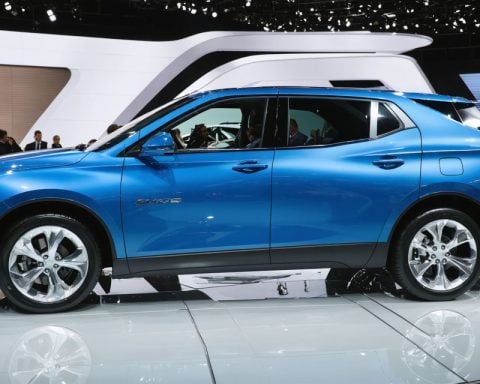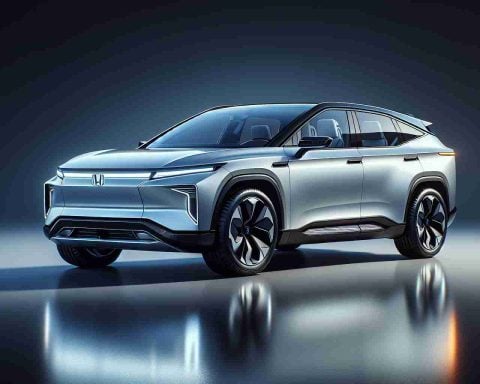- Tesla’s net income plummeted by 71% to $2.31 billion, down from $7.93 billion last year.
- Revenue increased by 2% to $25.7 billion, but fell below Wall Street’s expectations of $27.1 billion.
- Reported earnings per share increased by only 3% to 73 cents, missing analysts’ predictions.
- Despite stock volatility, investor optimism remains due to Elon Musk’s potential impact on the market.
- Tesla recorded a high of 495,570 vehicle sales in Q4, aided by promotional efforts to boost demand.
- Market share challenges from competitors, including traditional automakers and new EV brands, persist.
- Tesla plans to reduce vehicle costs further and introduce advancements in fully autonomous driving technology.
In a startling twist, Tesla’s fourth-quarter earnings reveal a dramatic decline in net income—down a staggering 71% compared to last year. The electric vehicle titan, helmed by the ever-ambitious Elon Musk, reported a profit of $2.31 billion, a far cry from the previous year’s $7.93 billion boost, largely stemming from a one-time tax benefit.
Despite an uptick in revenue, which climbed 2% to $25.7 billion, Tesla fell short of Wall Street’s expectations of $27.1 billion. Analysts had anticipated earnings of 77 cents per share, yet the reported profits ticked up by only 3%, landing at 73 cents. Such outcomes sent Tesla’s stock tumbling over 2% post-release, though it later rebounded as investors remained optimistic about Musk’s potential influence in the upcoming administration.
On a brighter note, Tesla achieved a record 495,570 vehicle sales in the fourth quarter, a significant rebound as they worked hard to stimulate demand through promotions like low-interest loans and reduced prices. However, the company is not immune to fierce competition; it has been losing market share to longstanding auto manufacturers and emerging EV rivals, especially from China.
Looking ahead, Tesla aims to slash vehicle costs even further—some models now dip below $35,000, marking a milestone in affordability. Additionally, the company teases the arrival of fully autonomous driving technologies, promising an exciting future for Tesla enthusiasts.
Key takeaway? Despite challenges and a revenue dip, Tesla’s commitment to innovation keeps the electric vehicle wave rolling forward!
Shocking Tesla Earnings Reveal New Challenges and Market Insights
Tesla’s Fourth-Quarter Earnings: A Mixed Bag of Performance and Prospects
In a notable turn of events, Tesla’s latest earnings report for the fourth quarter has illuminated significant challenges the electric vehicle (EV) manufacturer faces. While the company reported a 71% decline in net income, totaling $2.31 billion, it’s crucial to explore deeper fluctuations in market aspects, trends, and future projections to understand what lies ahead for Tesla.
New Insights on Market Trends and Forecasts
1. Market Forecasts: Analysts predict that Tesla’s competitiveness will further hinge on its ability to innovate significantly while managing cost reductions. Although the company recorded 495,570 vehicle sales, sustaining this momentum amidst increasing competition—especially from Asian EV producers—will be vital.
2. Innovations: Tesla is set to release advancements in fully autonomous driving technologies that could redefine its market positioning. These innovations may bolster consumer interest and accelerate sales, particularly among tech-savvy users.
3. Pricing Trends: With vehicle prices dropping below $35,000, Tesla aims to widen its consumer base beyond premium buyers, targeting middle-class consumers looking for sustainable vehicle options.
Key Considerations
1. Pros and Cons of Tesla’s Business Model:
– Pros: The brand is synonymous with innovation and sustainability, with record sales pointing to a strong demand for EVs.
– Cons: The share price volatility coupled with slipping market share reflects vulnerability in a fiercely competitive landscape.
2. Limitations of Current Production: Despite breakthroughs, Tesla may struggle with scalability due to supply chain issues and challenges in ramping up production to meet soaring demand.
3. Sustainability and Security Aspects: As Tesla pushes towards greater sustainability, it faces regulatory scrutiny regarding data privacy and the security of its autonomous technologies. Consumer trust in these technologies is crucial as they become more mainstream.
Most Important Related Questions
1. How will Tesla adapt to increasing competition from traditional automakers and new EV startups?
Tesla must continue innovating while maintaining affordable pricing to stay competitive. Strategic partnerships and investments in R&D will likely play a crucial role in its adaptation.
2. What is Tesla’s strategy for ensuring the success of its fully autonomous driving technology?
Tesla plans to enhance its software capabilities and conduct extensive testing to refine these technologies prior to a broader launch, aiming for high levels of consumer safety and trust.
3. How does Tesla’s pricing strategy affect its market share and consumer perception?
By lowering prices, Tesla aims to appeal to a broader market segment. However, this approach may also lead to questions about profit margins and brand prestige, which could affect long-term consumer loyalty.
To explore more about Tesla and its innovative journey, visit Tesla’s official website.


















